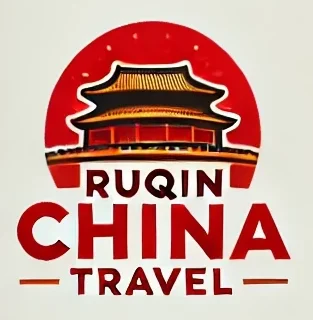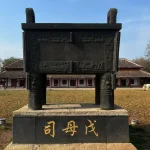Welcome to Anyang, a city with over 3,300 years of history and proudly known as “the First Ancient Capital of China.”
As the birthplace of oracle bone script and home to the UNESCO-listed Yin Ruins, Anyang holds a vital place in Chinese history. It’s also one of the earliest recorded capitals in China and a cultural treasure that remains refreshingly underrated by mainstream tourism.
This guide is specially crafted for foreign travelers visiting Anyang for the first time. From breathtaking historical relics to authentic street food, you’ll find everything you need to plan a smooth and inspiring journey. Whether you love ancient history, nature hikes, or local cuisine, Anyang is ready to surprise you.
1. Why Visit Anyang? Discover the Unique Charm of China’s Ancient Capital
Anyang may not have the global fame of Beijing or Xi’an, but its historic weight is undeniable. As the capital of seven ancient dynasties, it’s a key destination for understanding China’s early roots.
Most notably, it’s the cradle of oracle bone script and the birthplace of the Yijing (Book of Changes). It boasts two UNESCO World Heritage Sites — the Yin Ruins and a portion of the ancient Grand Canal.
Anyang also holds several world records:
- A replica of the world’s largest ancient bronze vessel, the Houmuwu Ding
- The longest mountain canal — the Red Flag Canal
- The world’s first writing museum
- The Wenfeng Pagoda, the only ancient tower that’s wider at the top than the base
Unlike many crowded tourist cities, Anyang remains peaceful and authentic. You can explore at your own pace, enjoy lower prices, and experience a more genuine slice of Chinese life.
Its location also makes travel easy. You can reach Anyang in 2.5 hours from Beijing or under an hour from Zhengzhou by high-speed train. The best time to visit is spring (April–May) or autumn (September–October). Even in summer, indoor attractions like museums stay cool and comfortable.
Most importantly, Anyang is becoming more welcoming to international visitors. The new Yin Ruins Museum includes bilingual displays and offers a global comparison of ancient civilizations, from Mesopotamia to the Nile. Visitors from around the world leave deeply impressed by this city’s quiet brilliance.
2. Getting Around Anyang: Transportation Tips for Foreign Visitors
Getting to Anyang is straightforward — even without an international airport.
How to Get to Anyang
- By Air: Fly into Zhengzhou Xinzheng International Airport (CGO), then take a 17-minute train to Zhengzhou East Station, followed by a 50-minute high-speed train to Anyang East Station.
- By High-Speed Rail: From Beijing West, it’s just 2.5 hours. From Zhengzhou, less than an hour.
- By Bus: Long-distance buses from cities like Zhengzhou, Luoyang, or Handan offer budget options.
Getting Around Anyang
- Taxi: Base fare is 6 yuan. Use the DiDi app (English version available) for easier rides.
- Bus: Fares range from 1–2 yuan. Routes 1, 11, and 18 stop at major attractions.
- Shared Bikes: Apps like Hello Bike and Meituan are great for short trips. Just link a payment method.
3. Practical Travel Tips for Anyang: Language, Money, Internet & More
Language
Locals speak Henan dialect, but Mandarin is widely understood in tourist spots. Museums offer English signage and guides. Still, it’s smart to download Google Translate or Youdao for smoother communication.
Money
- Link an international card to Alipay or WeChat Pay
- Carry ¥1000–¥2000 in cash
- Use UnionPay-compatible ATMs for withdrawals
Internet
China restricts sites like Google and Facebook. To stay connected:
- Buy a local SIM card (passport required)
- Use hotel or café Wi-Fi
- Install a VPN before arriving
Health & Safety
- Hospitals like Anyang People’s Hospital have international clinics
- Tap water isn’t safe to drink — buy bottled water
- The city is safe, but stay alert in public areas
Cultural Etiquette
- Dress modestly in temples
- No flash photography in museums
- Be polite, and avoid political topics
- Learn simple phrases like “Nǐ hǎo” (Hello) and “Xièxie” (Thank you)
Useful Apps
- Maps: Baidu Maps, Amap
- Translation: Youdao, Tencent Translate
- Transport: DiDi, 12306
- Food: Meituan, Dianping
- Payment: Alipay, WeChat Pay
4. Yinxu Museum in Anyang: A Deep Dive into Shang Civilization
The Yinxu Museum is Anyang’s historical centerpiece. Built directly over the Shang dynasty’s temple-palace ruins, it offers a powerful, up-close look at China’s ancient past.
The new museum opened in February 2024 with nearly 4,000 artifacts, including bronzes, jade, ceramics, and oracle bones. Most are displayed for the first time.
Getting There
- Located on Shachang Road in Yindu District
- Take Bus 1 or 18 from downtown, or a 15–20 yuan taxi
- Open daily from 9:00–17:00 (last entry at 16:30)
- Tickets: ¥70, same price for foreign visitors
Tips
- Rent an audio guide (¥30) — highly recommended
- Guided tours in Chinese: Tues–Sun at 10:00 & 14:00
- Photos allowed (no flash or tripods)
- Allow 3–4 hours to explore fully
Top Exhibits
- Oracle Bones: Over 150,000 found here
- Bronze Replicas: Including the legendary Houmuwu Ding
- Lady Fu Hao’s Tomb: Weapons, tools, and royal relics
- Global Civilization Hall: Compare Shang with Egypt, Mesopotamia, and more
- Ya Chang Tomb Exhibit: Weapons, personal items, and skeletal forensics
- “Who Was Zi?” Oracle Display: Daily life of a Shang prince through 600 bones
5. More Must-See Attractions in Anyang
Museum of Chinese Characters
This one-of-a-kind museum traces the evolution of Chinese writing. Inside, you’ll find immersive exhibits, interactive zones, and even a calligraphy playground.
Highlights:
- See the journey from oracle bones to simplified Chinese
- Learn about ethnic scripts
- Compare global writing systems
- Try calligraphy with interactive displays
Info:
- 📍 People’s Avenue East, Beiguan District
- 🕒 9:00–17:00 (Closed Mondays)
- 🎟️ Free (passport required)
- ⏳ 2–3 hours recommended
- 💡 Look out for “Oracle Bone School” events!
Wenfeng Pagoda
This iconic tower defies gravity. Built in the 10th century, it’s wider at the top than the base — and still standing after two major earthquakes.
What to Do:
- Climb 72 steps for a city view
- See intricate brick carvings
- Visit nearby Tianning Temple and old streets
Info:
- 📍 Wenfeng Middle Road
- 🕒 8:30–17:30
- 🎟️ ¥25
- ⏳ 1 hour visit
6. 🍜 A Taste of Anyang: Local Dishes You Must Try
Food in Anyang is bold, rich, and comforting. Here are the top dishes you can’t miss:
Must-Try Foods
- Huì Miàn: Hand-pulled noodles in a rich broth. Best with sweet pickled garlic.
- Dàokǒu Roast Chicken: Famous braised chicken with fall-off-the-bone tenderness. Take-home packs available.
- Fěnjiàng Fàn: A fermented porridge with a tangy, spicy kick — a true local classic.
Where to Eat
Shèng Délì Restaurant (盛德利):
A trusted local favorite offering an English menu. Try their “Three-Smoked Platter”, a flavorful sample of traditional meats.
7. 🛏️ Where to Stay in Anyang
Top Areas
- Wenfeng District (Downtown): Great for dining, shopping, and easy transport.
- Yindu District (Near Yinxu): Ideal for history lovers and museum access.
Recommended Hotels
- Wanda Realm Anyang: Upscale, modern, and centrally located.
- Jinjiang Inn / Home Inn: Budget-friendly chains with clean, practical rooms.
🌟 Let Your China Journey Begin in Anyang
Anyang is a city where the past and present live side by side. You might stand in awe at ancient ruins one moment, then savor a beef-stuffed flatbread under neon lights the next.
It’s a place full of history, warmth, and authenticity. Whether you’re here for a few days or just passing through, Anyang will leave a lasting impression.
We hope this guide helps you explore with ease and excitement. And when you return home, don’t forget to share your story — because your China adventure could start right here, in Anyang.
Safe travels — and may your next chapter begin in the heart of ancient China.



